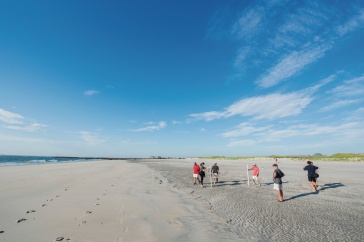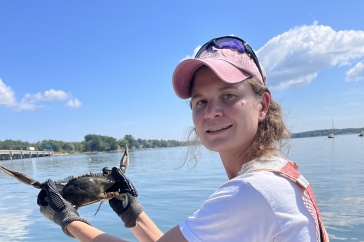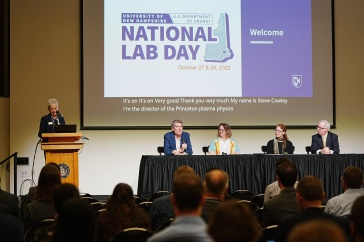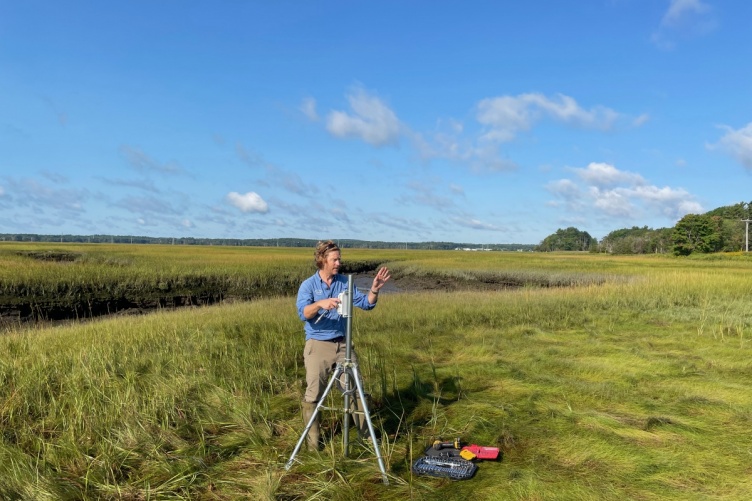
Gregg Moore, associate professor of biological sciences, sets up wireless water level recorders in the Hampton-Seabrook Estuary. Photo by Jenny Gibson.
UNH researchers have received $3.1 million from the National Fish and Wildlife Foundation for an innovative project that will protect Great Marsh — 20,000 acres of salt marsh spanning Massachusetts and New Hampshire — and the wildlife and people who share it.
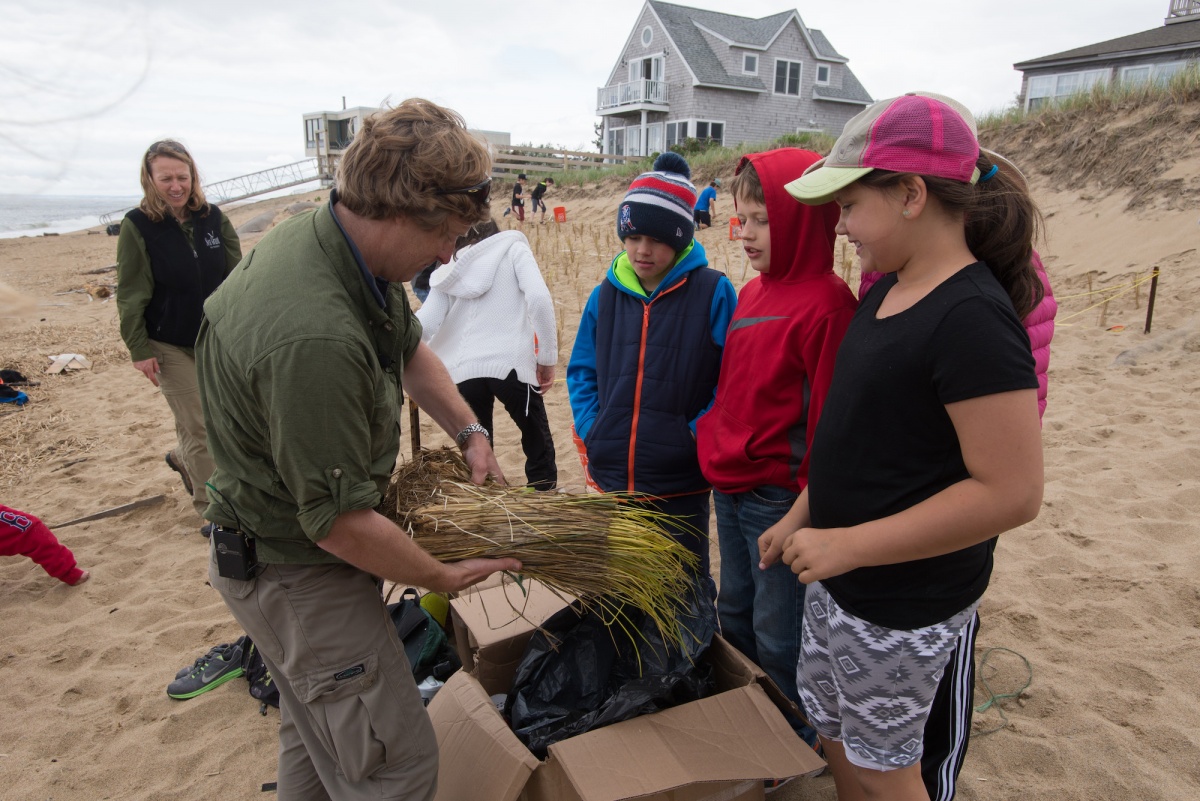
The project, led by Gregg Moore, associate professor of biological sciences, will pair marsh restoration and resilience efforts in the Hampton-Seabrook Estuary with dune stabilization measures from northern Massachusetts to southern New Hampshire. Researchers will use a variety of restoration techniques coupled with the latest technology, such as drone-based modelling, and will involve stakeholders, community volunteers and K-12 students to participate in creating solutions to stabilize and manage these fragile ecosystems.
“Great Marsh exists because of the fragile dunes, and now these coastal habitats are in peril from threats like sea level rise, coastal storms and other pressures.”
“The Great Marsh is a dynamic watershed system that serves as the primary coastal resilience landform protecting homes, businesses, infrastructure and the invaluable resources of the estuary,” says Moore, principal investigator on the grant. “Great Marsh exists because of the fragile dunes, and now these coastal habitats are in peril from threats like sea level rise, coastal storms and other pressures, and we feel management plans shouldn’t stop at state borders.”
The researchers and their partners have been developing approaches to bolster the resilience of the broader Great Marsh for more than 15 years. This project will build on that experience by reaching across state borders to develop a mutual cooperation to stabilize 10 miles of dunes and benefit more than 1,000 acres of salt marsh through restoration actions that help maintain vital habitat for threatened species, including piping plover and salt marsh sparrow.
In addition, they will initiate a pilot sediment placement project in the nearby Great Bay Estuary to gauge if it can make a difference in rescuing areas of the marsh designated as “drowning” — when marsh growth is outpaced by sea level rise. Along with these three restoration and resilience approaches, researchers plan to incorporate an engaged scholarship component, recruiting more than 750 volunteers including students, teachers, community members and project partners and creating a dune and marsh monitoring network for affected communities, stakeholders and resource users to guide adaptation activities for present and future climate scenarios.
The Great Marsh is the longest, continuous saltmarsh estuary in New England extending from Cape Ann in Mass. northward to Hampton, N.H. It includes more than 20,000 acres of tidal rivers, tributaries and coastal wetlands formed behind the dune and sandy barrier beach system that protects it. Its vast landscape provides a vital habitat for threatened plants and animals and serves as an important protectant.
David Burdick, research associate professor, and Alyson Eberhardt, extension specialist at UNH Cooperative Extension and NH Sea Grant, will serve as co-principal investigators.
State and community partners will include the NH Department of Environmental Services, Climate Adaptation Workgroup, Seabrook-Hampton Estuary Alliance, Hampton-Seabrook Collaboration, Piscataqua Region Estuary Partnership, National Wildlife Federation, Merrimack Valley Planning Commission, Merrimack River Beach Alliance, Plum Island Taxpayers Association, Massachusetts Department of Conservation and Recreation, and Conservation Commissions in the coastal municipalities of Newbury, Newburyport, Salisbury, Seabrook, Hampton, Essex and Ipswich.
Funding is from the National Coastal Resilience Fund of the National Fish and Wildlife Foundation (NFWF), which includes funding partners NOAA, the U.S. Environmental Protection Agency, U.S. Department of Defense, Shell, TransRe, AT&T, and Occidental.
-
Written By:
Robbin Ray ’82 | UNH Marketing | robbin.ray@unh.edu | 603-862-4864

















































